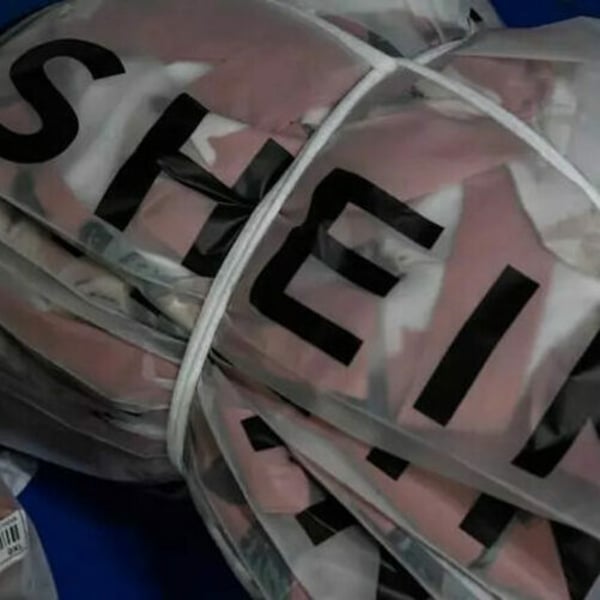Fashion
Paris checks arriving Shein parcels at Roissy-CDG airport

Published
November 7, 2025
All parcels from Shein arriving at Roissy-CDG airport are being inspected on Thursday as part of a large-scale operation launched in the morning in the presence of ministers from Bercy, a day after proceedings to suspend the platform were initiated, AFP observed.
These checks are intended to support the ongoing proceedings against Shein, and “initial findings point to non-compliant and illicit products,” including unauthorised cosmetics, toys that are dangerous for children, counterfeit items and defective domestic appliances, said Public Accounts Minister Amélie de Montchalin, in a post on the social network X.
She had travelled to Roissy-CDG airport in the morning, accompanied by Trade Minister Serge Papin. In particular, they watched customs officers unpack numerous white parcels bearing the letter S of the Asian platform’s brand.
“This shows that we are not selling products to consumers; it means we are importing commercial goods, and in that case we apply the rules on commercial imports,” added de Montchalin.
Conducted jointly by the DGCCRF, customs and the air transport gendarmerie, the operation will see 200,000 parcels inspected and product compliance verified, notably by checking the “veracity of declarations and compliance with tax and customs obligations,” said the Public Accounts Minister.
Roissy-CDG is Europe’s second-largest airport, handling an average of two million tonnes of freight each year, and has experienced an unprecedented surge in e-commerce flows since 2022, the minister’s office told AFP.
Each year, 95% of parcel flows from China pass through the airport before being distributed across the country, according to de Montchalin.
This article is an automatic translation.
Click here to read the original article.
Copyright © 2025 FashionNetwork.com All rights reserved.
Fashion
Trade on the brink: How finance is reshaping global growth

UNCTAD warns global trade is increasingly exposed to financial volatility, with over 90 per cent reliant on credit, currencies and payment systems.
Global growth is projected to ease to 2.6 per cent in 2025–26.
Higher borrowing costs, climate risk premiums and financialised food trade are amplifying systemic risks for developing economies and weakening long-term resilience.
Source link
Fashion
Suzhou Tianyuan lifts accuracy to 98% with Coats Digital’s GSDCost

Through the digitization of its production processes, Tianyuan has improved SMV calculation accuracy to 98%, shortened new product process analysis time from four days to one, and reduced sample garment development cycles by 25%.
Suzhou Tianyuan achieved 98 per cent SMV accuracy after adopting Coats Digital’s GSDCost.
Process analysis efficiency rose 60 per cent, cutting new product analysis time to one day and reducing sample development cycles by 25 per cent.
Cost estimation accuracy improved to 95 per cent, while on-time delivery reached 96 per cent and material waste fell by 2 per cent.
Founded in Suzhou, Tianyuan Garments employs over 5,000 people and produces more than 26 million garments annually, including sportswear, shirts, trousers, coats, down jackets, and technical outerwear. Certified under the ISO9001 Quality Management System and the BSCI Social Responsibility System, Tianyuan has been honoured with the Adidas Global Supplier Award for four consecutive years.
Before adopting GSDCost, Tianyuan’s standard minute value (SMV) calculations were largely based on engineers’ individual experience, resulting in variations of up to 30% across production lines. The lack of consistent data meant that process analysis for new products could take several days, often producing inaccurate results. The increasing need for faster turnarounds and more fragmented, complex orders highlighted the necessity for a more agile, scientific approach.
Hailan Chen, Industrial Engineering Director at Suzhou Tianyuan, said: “Before implementing GSDCost, SMV calculations relied heavily on engineers’ experience, resulting in variations of up to 30% across different production lines. New product process analysis consequently, took three to four days. As fast fashion and fragmented orders became more prevalent, traditional methods struggled to meet brands’ demands for a rapid response.”
Recognising rising industry costs and the need to strengthen competitiveness, Tianyuan began its digital transformation journey three years ago.
Mr. Tang, General Manager at Suzhou Tianyuan, said: “Amid rising costs and shifting production capacities across the global apparel manufacturing industry, we identified digital transformation as our strategic solution. Before implementing GSDCost, although we served as a contract manufacturer for well-known brands, our cost control methods were inefficient and manual, leading to a year-on-year decline in profit margins.”
The implementation of GSDCost played a pivotal role in achieving the company’s strategic goals of higher transparency, efficiency, and profitability. With GSDCost onboard, Tianyuan quickly established a unified digital process platform that standardised SMV calculations across all operations.
Hailan Chen added: “After adopting GSDCost, our SMV calculation accuracy has now improved to 98%, and new product process analysis time has been shortened to just one day—increasing the quotation efficiency by over 60%.”
For complex functional apparel orders, GSDCost’s intelligent matching feature enables Tianyuan to complete process breakdowns in just a few hours—a task that previously took days.
“The standardised operation library in GSDCost also helped us reduce sample garment development cycles by 25%, securing a critical competitive advantage in an increasingly demanding market,” explained Hailan Chen.
Mr. Tang added: “By digitizing the entire process from order placement to shipment, Tianyuan achieved three major breakthroughs. First, the accuracy of cost estimation improved from 75% to 95%, strengthening our negotiation power and enabling us to secure partnerships with premium clients such as Adidas. Second, we established a real-time production management system, increasing on-time delivery performance to 96% and reducing material waste by approximately 2%. GSDCost has become the core engine driving our transformation from manufacturing to smart manufacturing.”
GSDCost, Coats Digital’s method analysis and predetermined times solution, is widely acknowledged as the de facto international standard across the sewn products industry. It supports a more collaborative, transparent, and sustainable supply chain in which brands and manufacturers establish and optimise ‘International Standard Time Benchmarks’ using standard motion codes and predetermined times. This shared framework supports accurate cost prediction, fact-based negotiation, and a more efficient garment manufacturing process, while concurrently delivering on CSR commitments.
Boris Lu, Customer Success Manager at Coats Digital, said: “The success of the GSDCost project at Suzhou Tianyuan Garments demonstrates the profound value of digital transformation in apparel manufacturing. During the implementation process, we worked closely with the Tianyuan team to deeply integrate industry expertise with system functionalities, building a standardised database covering over 50,000 processes. This has enabled Tianyuan to make faster, more accurate production decisions, optimise processes across multiple lines, and strengthen both its competitiveness and operational resilience.”
Key Benefits and ROI for Suzhou Tianyuan
- 98% accuracy in SMV calculation
- 60% improvement in process analysis efficiency
- 25% reduction in sample development cycles
- 95% accuracy in cost estimation
- 96% on-time delivery performance
- 2% reduction in material waste
Note: The headline, insights, and image of this press release may have been refined by the Fibre2Fashion staff; the rest of the content remains unchanged.
Fibre2Fashion News Desk (MS)
Fashion
Nov 2025 producer prices in Germany down 2.3% YoY: Destatis

Lower energy prices continued to be the main reason for the YoY decline.
Intermediate goods prices in the month were 0.2 per cent lower YoY. By contrast, capital goods, non-durable consumer goods and durable consumer goods cost more than a year earlier.
The producer prices of industrial products in Germany were 2.3 per cent lower year on year (YoY) in November this year, official statistical show.
These remained unchanged month on month (MoM) in the month.
Lower energy prices continued to be the main reason for the YoY decline.
When energy prices are excluded, producer prices in November 2025 rose by 0.8 per cent YoY and down by 0.1 per cent MoM.
When energy prices are excluded, producer prices in November 2025 rose by 0.8 per cent YoY and down by 0.1 per cent MoM, a Destatis release said.
Energy prices in November were down by 9 per cent YoY and up by 0.2 per cent MoM; natural gas prices declined by 14.2 per cent YoY.
Capital goods prices in November were up by 1.9 per cent YoY and remain unchanged MoM.
Non-durable consumer goods produced and sold in Germany were 1.3 per cent more expensive YoY; these were down by 0.9 per cent MoM.
Durable consumer goods cost 1.8 per cent more YoY in November 2025.
Fibre2Fashion News Desk (DS)
-

 Business1 week ago
Business1 week agoHitting The ‘High Notes’ In Ties: Nepal Set To Lift Ban On Indian Bills Above ₹100
-

 Business7 days ago
Business7 days agoKSE-100 index gains 876 points amid cut in policy rate | The Express Tribune
-

 Sports7 days ago
Sports7 days agoJets defensive lineman rips NFL officials after ejection vs Jaguars
-

 Business7 days ago
Business7 days agoStudying Abroad Is Costly, But Not Impossible: Experts On Smarter Financial Planning
-

 Tech1 week ago
Tech1 week agoFor the First Time, AI Analyzes Language as Well as a Human Expert
-

 Entertainment7 days ago
Entertainment7 days agoPrince Harry, Meghan Markle’s 2025 Christmas card: A shift in strategy
-

 Business4 days ago
Business4 days agoBP names new boss as current CEO leaves after less than two years
-

 Fashion4 days ago
Fashion4 days agoIndonesia’s thrift surge fuels waste and textile industry woes

















